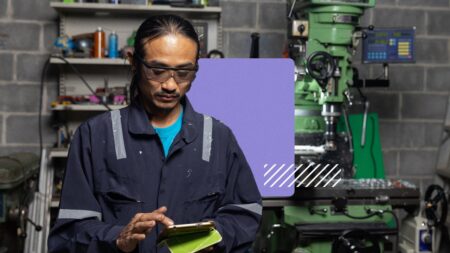Elise Awwad is president and CEO of DeVry University.
Throughout my 20 years in higher education, I’ve witnessed firsthand the evolving dynamics and growing emphasis on lifelong learning. The acceleration of technological advancements, the rapid change in nearly every industry, and the shifting nature of work itself are key factors driving the increased interest in continuing education. Traditional degrees, while still highly valuable, no longer serve as the sole ticket to career success or fulfillment. Instead, they mark the start of a continuous learning journey.
The digital revolution has democratized access to information, making learning more accessible and affordable. The rise of online platforms and micro-credentialing has enabled individuals to update their skills in real time, catering to the immediate needs of their professions. Additionally, the changing job market, with its emphasis on digital literacy, critical thinking and adaptability, demands a workforce that is not just qualified but also continuously progressing.
To meet the needs of nontraditional students, colleges and universities must go beyond traditional degree programs to offer alternative, flexible learning opportunities that cater to a diverse range of learners, including working professionals, adults looking to reskill or upskill and traditional students preparing for a complex future. Here’s how higher education institutions can strengthen their efforts and adapt to the growing demand for lifelong learning.
Accommodate lifelong learning for nontraditional adult learners.
Instructure’s State of Student Success and Engagement in Higher Education report revealed 61% of students would pursue a skills-based learning opportunity to advance their careers. To effectively deliver lifelong learning opportunities, higher education institutions must adopt flexible and accessible learning models that allow for community and engagement. This involves offering modular, stackable learning opportunities that allow learners to build upon their education as their careers progress and interests evolve. It also means leveraging technology to provide learning options that fit the schedules of nontraditional adult learners, who often juggle professional and personal responsibilities.
The approach should also encompass personalized learning paths that recognize and appreciate prior learning and work experiences, allowing for accelerated progress toward new qualifications. Further, institutions must foster partnerships with industries to ensure that curricula and course content remain relevant and aligned with current and future job market needs. This type of partnership and collaboration can also open opportunities for experiential learning, internships, apprenticeships and mentorship programs that enrich the educational experience and prepare students for real-life work situations.
Implement a holistic strategy.
I think a comprehensive strategy is important when thinking about lifelong learning programs and promises within higher ed. At the core, it is important to integrate lifelong learning principles within an institution’s curriculum. This involves creating integrated courses that not only stand alone for immediate skill acquisition but also build toward more comprehensive certifications and degrees (think stackable blocks—each block is valuable and always able to be built upon in the future).
Flexibility is and will continue to be a table-stakes need when thinking about lifelong access to learning. Students should be able to engage in learning pathways that adapt to their changing career goals and life circumstances. These two components together encourage ongoing education beyond initial degrees or certifications.
Strong partnerships help identify emerging skill needs and integrate real-world examples into the coursework. By doing so, we increase relevance of curriculum, and this offers learners hands-on experience, bridging the gap between education and employment.
Also, developing and enhancing online platforms that offer personalized learning experiences is necessary for reaching all audiences—serving them the way they choose to be served. These types of tech-enabled platforms can also help with the use of data analytics to recommend courses, track progress and identify skills gaps. By offering a mix of synchronous and asynchronous learning opportunities, institutions can accommodate the varied schedules of all learners while supporting adult learners—it’s the concept of anytime, anywhere accessibility.
Capture demand.
The best way for universities to understand and capture the increasing demand for lifelong learning is to use data analytics to understand the needs and preferences of learners, allowing for continuous improvement and customization of offerings. Most of all, institutions should:
• Enhance awareness and value perception by communicating the benefits. Clearly articulate the personal and professional benefits of lifelong learning, such as career advancement and skill development.
• Engage alumni as lifelong learners through relevant programs and affordable pathways, fostering a culture of continuous learning among graduates.
• Share success stories of lifelong learners who have achieved milestones or improved their careers and have demonstrated tangible outcomes based on their continuing education efforts.
• Offer courses and programs that are flexible in terms of timing, duration and delivery mode to accommodate the diverse schedules and commitments of adult learners. Allow learners to customize their educational pathways, selecting courses and programs that align with their interests, ambitions and goals. And design programs and courses that are relevant to current and future job markets to ensure that learning contributes to employability and career advancement.
• Utilize the latest technologies and educational tools to enhance the learning experience, making it more engaging, interactive and effective. This is an audience that requires flexibility but will also look for engaging and practical education.
The challenges contributing to a lack of focus and implementation of lifelong learning in higher education institutions are somewhat complex, stemming from institutional, systemic and likely societal factors. To address these challenges, you must first understand their roots to better propose real solutions. It’s about truly understanding the problems first before trying to solve them.
There is a cultural expectation in many societies that education is a phase that ends with a degree and is terminal in nature rather than an ongoing process. This belief can stifle lifelong learning and make institutions less likely to prioritize it. However, higher education must be agile, student-centered and forward-thinking, aligning closely with the evolving needs of the global economy and society at large.
Forbes Business Council is the foremost growth and networking organization for business owners and leaders. Do I qualify?
Read the full article here
















